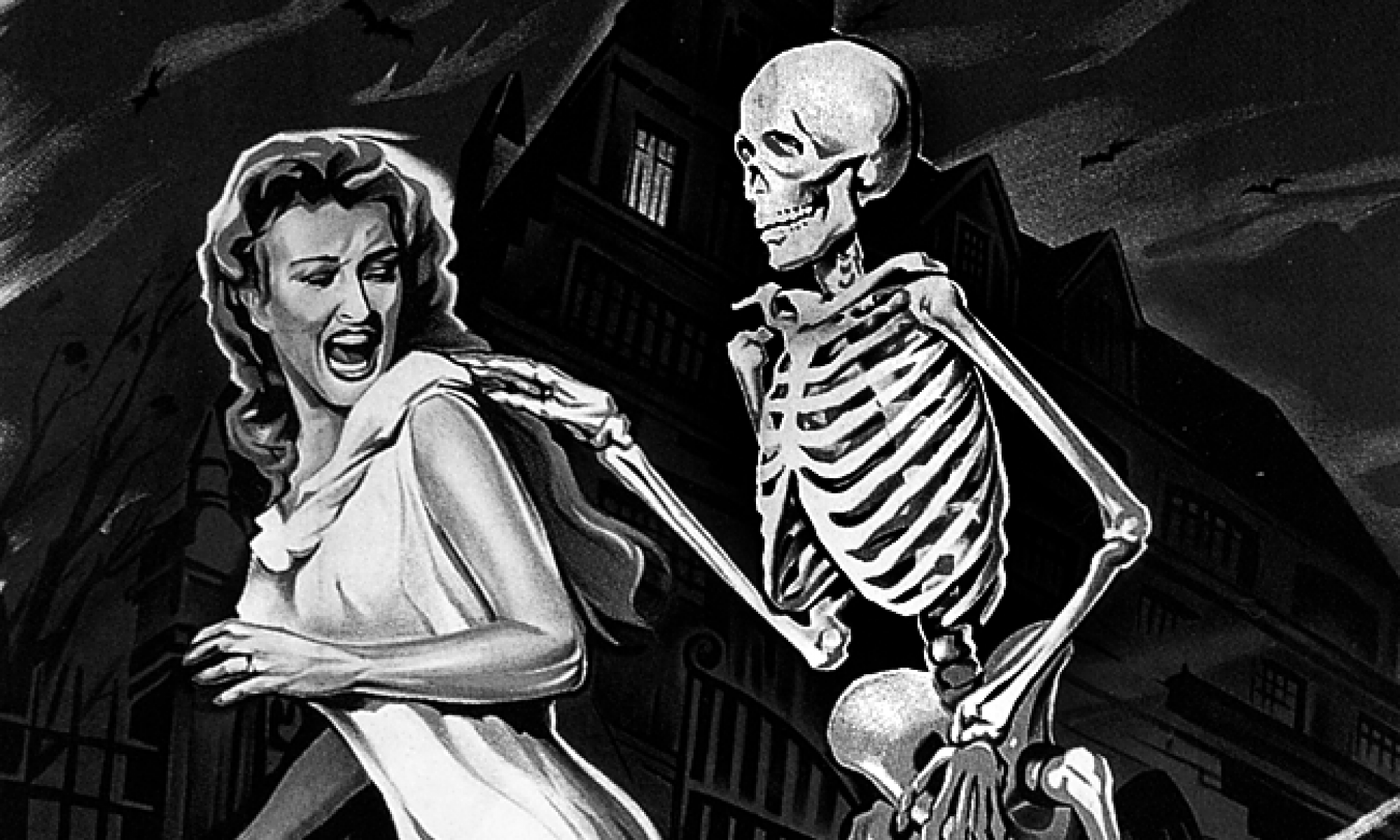Directed by Herk Harvey in 1962, Carnival Of Souls is an interesting horror film due to the vagueness in plot and the ending which is left up to the interpretation of the audience. Mary and her two friends, drag race a car against a few men, and end up falling off of the bridge. Mary then comes up out of the water a few hours later, traumatized from what she has just been through. The plot continues by Mary moving to another small town in Utah, one where she plays the organ at a church although she is not personally religious. Mary is continually drawn to an old carnival ground, one where she is told a numerous amount of times that she is forbidden. Strange things continue to happen to Mary, including people resembling monsters or ghouls with very white faces showing up throughout Mary’s new routine. The movie ends with a switchover to the car from the beginning being pulled out of the water, and Mary and her two friends dead inside.
I believe that the film’s argument is that the human temptations, obsessions, and addictions can make people crazy, and result in negative actions or punishments, in this case death. The vagueness of this film leaves this up to interpretation, however I believe that Harvey portrayed this argument through the middle of the plot, which I believe to be Mary’s hallucination in the last few minutes she is alive while drowning in the car. With few special effects and jump scares, the film’s intended audience consists of people interested in mystery, and having conversations on various interpretations of films. I believe that the audience is on the younger side, and enjoys psychological thrillers.
The subtext of the film is one which discusses religion, and how Mary’s distance from religion is ultimately what leads her to these crazy thoughts and experiences. Mary is portrayed as crazy, and it is made clear throughout the film that playing the organ within a church was simply a job. It seems that everyone else in the film is very much on the same rhythm, and that Mary is different from the rest, some of which are very religious.
I personally did not see my horror trope, racism, in my film, however I did notice that the characters were only white. This is possibly due to the age of the film, and racism in media in general. After more research, I also found it interesting that this was one of the films which inspired George Romero for Night of the Living Dead a few years later. The monsters or ghouls, specifically the face of the man was one of Romero’s inspirations behind the zombies.
One aspect of the film which I did believe to be controversial was Mary’s reliance on her neighbor is portrayed as creepy, drunk, and as a danger to her. That although may be my opinion, but I feel as the dominance of men is controversial when studying this film now, recognizing that this was probably seen as much less controversial when it was released.
I believe the argument of this film to be successful, mainly because of the shift in plot into this nightmare that seems realistic, yet at the same time, Harvey does a good job of clarifying that something is off. I think the carnival ground is intriguing, and the tie to religion also adds to the success. I find that temptations and obsessions are often studied in comparison to religion, where often moderation is taught. The ending leaves the audience to think, and makes it more successful for me because it is realistic to have a horrific nightmare similar to these hallucinations that Mary feels are real. I would rank this film an 8 out of 10. Carnival of Souls is intriguing, and the only thing preventing myself from rating it a 10 is the confusing collection of scenes, seeming to miss the cohesiveness of most movies. I would recommend this to the intended audience because I think it is one of the first horror films to spark conversation on what actually happened or what the true ending was. I believe this audience to be similar to the audience of Shutter Island, people who have a desire to watch the film again to decipher what scenes are and are not reality. By introducing Mary as the protagonist, Harvey allows the audience to decide if she is the crazy or corrupt one in the end, with severe obsession or temptation, even though we feel as if we are next to her throughout the whole film and empathize with her about the terror happening around her.
Evan Rauch is a public relations senior at the University of Texas at Austin, pursuing a Business Foundations Certificate. With her spare time, Evan is involved with the on campus organization, Spoon University, where she leads the social media team to inform the student body about new restaurants and food “hacks” around Austin. She also enjoys jewelry making, crocheting, and cycling.
